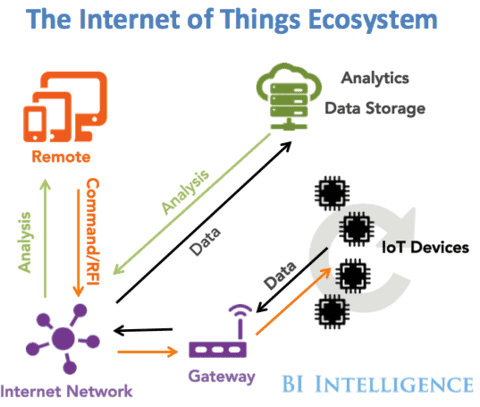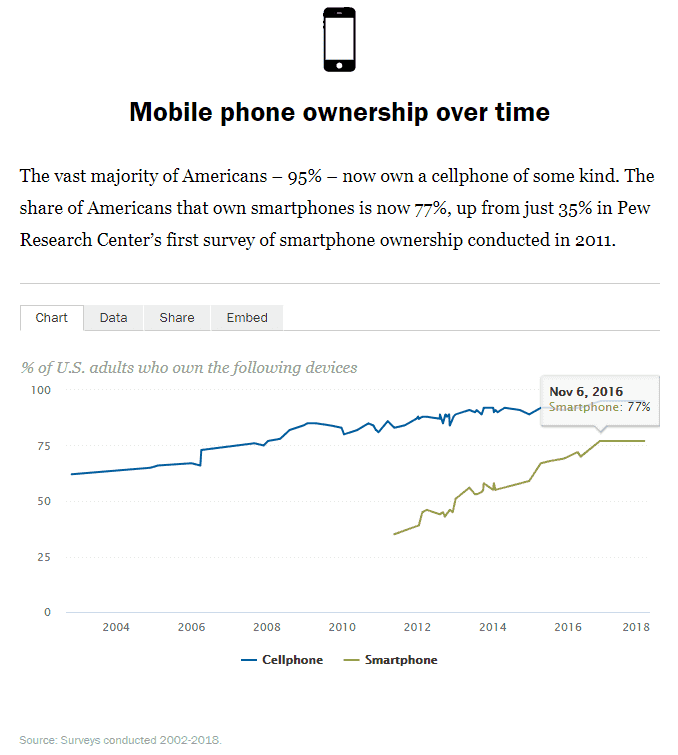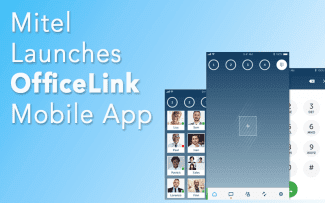In both our personal and our professional lives, the very definition of the term “communication” has proven to be quite fluid over the last decade. There was a time where, if you wanted to get in touch with someone, you simply picked up the phone and gave them a call. Then, Steve Jobs walked across a stage in Cupertino in 2007 and introduced the iPhone to the world and changed everything for all time.
In the modern era, even the term “communication” itself has much broader implications than ever before. For some, it still means traditional voice calls. For others, it implies video conferencing. For others still it can mean email, text messaging, social networking and more – in all likelihood, all at the same time.
For enterprise users in particular, it’s how employees unlock new opportunities to work “smarter, not harder” every day. It’s how they operate in an increasingly mobile world where being productive out of the office is arguably more important than being productive inside it. It’s how people collaborate with one another and forge critical relationships with customers.
But at the end of the day, even this is only as reliable as the technology at the heart of it all.
This, in essence, is why concepts like VoLTE are so important. What is VoLTE, why does it matter, how is it poised to impact VoIP and why should you care? The answers to all of these questions and more require you to keep a few key things in mind.
What is VoLTE?
Before you can get a better understanding of exactly what VoLTE is and why it matters, you must first learn a little bit more about the technology that came before it: VoIP. Short for “voice over Internet protocol,” VoIP is a communications methodology designed to deliver both voice and multimedia communications over Internet protocol networks, with the Internet being perhaps the biggest and most immediate example.
For decades, voice services were delivered via a public switched telephone network – essentially, the standard (and often analog) services that most people had in their homes and offices. While this solution worked fine for many people for many years, and was indeed the standard operating procedure in most cases, traditional analog services had a wide range of disadvantages that quickly grew too troublesome to ignore.
For business users in particular, traditional phone lines were very difficult to reconfigure or scale as an organization continued to grow and evolve. Adding new phone lines and equipment was almost always expensive, but was essentially mandatory as an organization brought new employees into the fold. Likewise, mobility was essentially non-existent.
If you needed to take a phone call to your business number, you essentially had to be sitting at your desk in your office in order to do so. If you weren’t present, you would miss that call. Many different voice forwarding and other “stopgap” solutions were implemented, but they too quickly proved to be more trouble than they were really worth.
Likewise, traditional phone systems are incredibly fragile. Service could be interrupted due to something as seemingly simple as inclement weather, thus taking a business’ ability to communicate offline in the process. But perhaps most critically, it has always been very hard to embrace new features when a system is still handled entirely via these traditional means.
Even something as simple as adding voicemail capabilities often involved the purchase, installation and ongoing maintenance of new equipment – thus increasing costs even further.
VoIP, on the other hand, is designed to address the vast majority of these issues – essentially all at the same time. For starters, VoIP is far easier to install, configure and maintain than a traditional system. If you need to add support for additional users (like if a business suddenly brings on a variety of new employees to handle a seasonal fluctuation), this can be accomplished almost instantly. There are no additional phone lines that need to be installed and, indeed, no wires that need to be run throughout a facility in the first place.
Because of that, VoIP scales up and down incredibly easily. Businesses can avoid falling into the trap of spending huge amounts of money on equipment that they don’t actually end up using just because their hiring predictions weren’t as accurate as they’d hoped.
At the same time, a huge range of different types of call features are supported – voice services and additional options like fax, SMS text messaging, voice-messaging and more are all handled over the public Internet via the same system, eliminating the need for additional equipment and bringing everything together under the umbrella of “one solution” for the first time.
But for most users, the major benefit of VoIP has to do with the increased level of mobility that it brings with it. For business VoIP supporters, an employee’s telephone number will literally follow them wherever they go, which can be particularly helpful for those employees who do a lot of traveling or who do a lot of work in the field.
If you’re sitting at your desk in your office, you can always take a call via your traditional handset the same way you always have. However, if you’re on the way to a client’s office for an on-site consultation, you can be reached at the same number via your mobile phone.
Likewise, if you’re halfway around the world in an airport lounge getting ready for your plane to take off, you can receive the same call from the same number right from your laptop computer (provided that an active Internet connection is present, of course).
All of this is to say that VoIP represented an incredible leap forward in terms of not only how easy it is to communicate in the modern era, but also with regards to the implications of what communication could possibly become moving forward.
Because of that, when someone informs you that VoLTE represents a similarly massive leap forward in terms of how, where and why we can communicate with one another in both personal and professional environments, it’s easy to see why you should start paying attention.
How VoLTE Works
Short for “voice over long-term evolution,” VoLTE is a relatively new standard for high-speed, wireless communication for mobile phones and data terminals. Unlike VoIP, VoLTE is a mobile-only technology. If you wanted to get VoIP set up in your office, for example, you would need to make sure that some type of high-speed or broadband Internet connection was present.
Seeing as how the vast majority of all businesses are currently using this type of networking technology, that requirement isn’t really a problem. But VoLTE takes things one step further by offering voice calls over 4G LTE cellular networks – the same kind that your smartphone is probably using right now.

BI Intelligence
The important thing to understand about all of this, however, is that VoLTE also includes support for wearable technology (think: the Apple Watch) and other Internet of Things connected devices. According to one recent study conducted by Intel, the IoT in general is predicted to encompass more than 200 billion connected devices all over the globe by as soon as 2020. Another study from Business Insider predicted that the total business-related spending on IoT-related solutions will hit $6 trillion by as soon as 2021.
The IoT can and likely will encompass everything – from smartphones and tablets to industrial sensors, connected manufacturing machines, point-of-sale systems in retail stores and much, much more, in addition to the plethora of different devices aimed at the B2C market. By design, VoLTE can potentially turn all of them into a communications platform for the 21st century.
Why VoLTE Matters
Again, it’s important to think about VoLTE for what it really is – not necessarily a replacement for concepts and technologies like VoIP, but a way to take the major gains we’ve already enjoyed and push them even farther down the line.
Perhaps the biggest advantage that VoLTE brings to the table – especially when compared to traditional mobile calling – is the superior call quality that it has already become famous for. Not only can far more data be transferred over a 4G LTE connection as opposed to a 2G or 3G connection, but you’re essentially getting an HD voice call every time you use a VoLTE device. For business users in particular, where call quality and the ability to adequately hear someone’s inflection and their tone of voice are critical to forming relationships, this alone is worth the potential upgrade for many people.
Equally impressive are the improved coverage and connectivity options that VoLTE will bring with it. You can literally use VoLTE service at any location on planet Earth with an active cellular connection. Even if you’re standing in a location where a 4G LTE signal is not available, the service will still revert back to 2G or 3G connections (whichever is faster). Not only that, but VoLTE can connect calls at speeds approximately twice as fast as current methods as well.
Another one of the most important advantages of VoLTE over VoIP has to do with the fact that users can now make voice and data calls simultaneously. Under previous methods, data could only be transmitted over an LTE network when you were not currently engaged in a voice call. If you were, that data would be transmitted at significantly slower speeds – usually 3G or 2G. With VoLTE, on the other hand, data can be carried over the mobile connection at the same fast speed even when a voice call is currently taking place.
So if you were in the middle of a conference call with a group of fellow employees who were all working on the same project files together and needed to be able to send an updated version of that file to all parties, this previously would have required you to end the call. With VoLTE, however, that’s no longer necessary – you can send or receive any data that you’d like without missing a beat.
Finally, VoLTE tends to bring with it better battery life for mobile users because the phone itself has to do less switching between 2G, 3G and 4G connections before, during and after a call. If you and your employees are spending more and more time out of the office and don’t want to have to constantly worry about low battery charges, this too could be a major benefit just waiting to be taken advantage of.
The “Mobile” Implications
 Pew Research Center[/caption]
Pew Research Center[/caption]In terms of being a mobile-only service, it’s important to understand that VoLTE is designed less with “where we currently are” in mind and more in terms of “where we’re headed.” According to a recent study conducted by the Pew Research Center, roughly 77% of all Americans now own a smartphone of some kind. Broadband service (particularly in the home), on the other hand, declined between 2013 and 2015. But perhaps most relevant to this discussion is the fact that as of 2018, roughly 20% of Americans do not use broadband at home but do own smartphones – up from just 12% a few years earlier, in 2016.
So there will come a day in the not-too-distant future where the majority of people who use the Internet do so from a smartphone or other mobile device with a cellular data connection. When that day arrives, VoLTE will officially supplant VoIP as one of the dominant forms of communication on the planet – particularly for businesses everywhere.
For some, the idea that VoLTE coverage is limited to 4G LTE networks may be a deal breaker – particularly for enterprise users. But while this was a problem for early adopters, it has become far less so over the last few years alone. According to one recent study, as of 2018, an average person in the United States has full access to a 4G network about 90.32% of the time. This is a number that is only going to improve over the next few years, thus mitigating the potential risk and increasing the odds that both parties would be on a 4G connection even further.
In The End
Because VoLTE is still a relatively young technology (the world’s first commercial “fully featured” VoLTE service was launched in Singapore in 2014), there are certain limitations that it brings with it that VoIP-exclusive users currently do not have to contend with. As previously stated, VoLTE is a mobile-only technology – meaning that as of 2018, both the caller and the recipient need to be connected to a 4G LTE network in order for the technology to work. This isn’t the problem that it used to be, but for some it can still be an (understandable) sticking point.
Likewise, many VoLTE providers currently only offer a limited range of additional services – certainly not yet at a capability to match what even standard VoIP packages can offer.
But when you consider the wide range of benefits that VoLTE brings with it – including superior call quality, improved coverage and connectivity, offering features like video calling and an increased battery life for mobile devices, it’s safe to say that the implications VoLTE has in store for business users in particular over the next few years are very exciting, indeed. Once you also consider the impending changes of Internet of Things-enabled devices poised to take place over the next decade, it’s easy to see why so many are so excited about what VoLTE has in store for us all.








